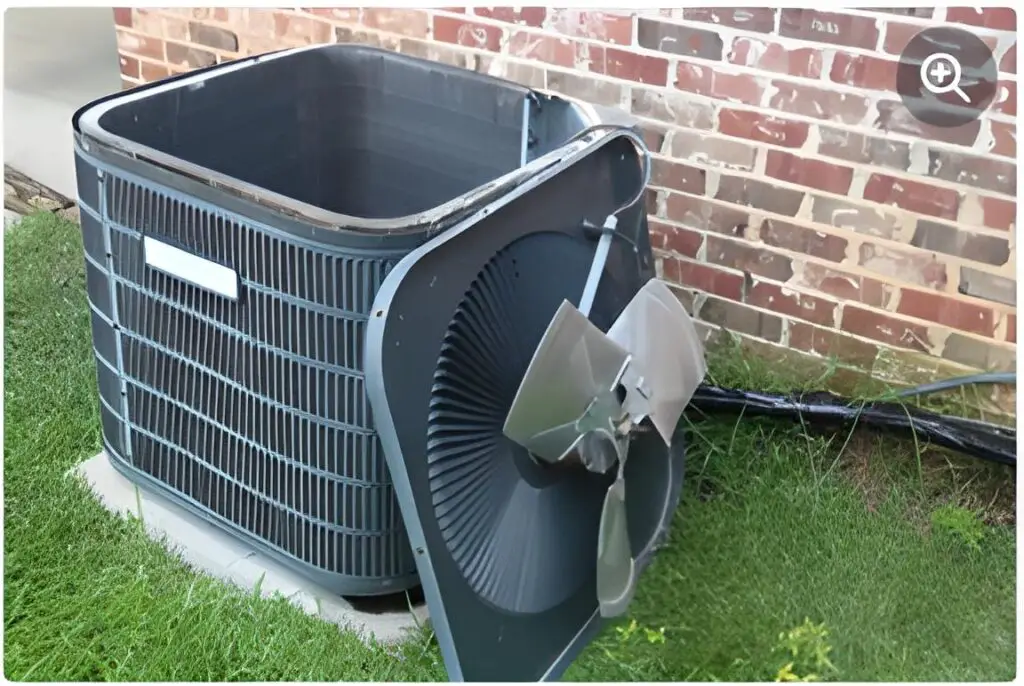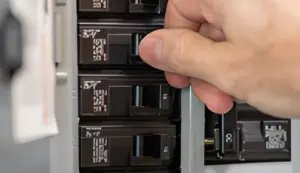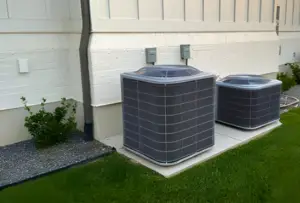When the cold weather sets in, a functioning heater is a crucial aspect of any household. So, it’s a common issue when the heater is not blowing hot air in your home. This can be a result of various reasons, ranging from a simple malfunction to a serious issue.
In this article, we’ll explore the most common causes of why your heater is not blowing hot air and provide possible solutions to fix the problem. Whether you’re a homeowner or a renter, understanding the reasons behind the heater’s failure to produce hot air can help you take the necessary steps to resolve the issue and keep your home warm and cozy.
Table of Contents
Malfunctioning Thermostat
A malfunctioning or improperly set thermostat can be the most common cause your heater to not work properly. The thermostat is responsible for regulating the amount of heat generated by your furnace and when that heat is generated. If the thermostat is not functioning correctly, it may not provide the appropriate signals to your furnace to turn on and generate heat.
The low battery of a thermostat can cause it to malfunction, including causing the heater to not work. It is recommended to replace the batteries as soon as possible to restore proper function to the thermostat and heating system.
If the fan setting on the thermostat is set to “on” instead of “auto”, the fan will continue to run, even if the heating system is not in use. This can result in the heater not functioning properly. To resolve this issue, simply change the fan setting to “auto” on the thermostat.
In some cases, the problem may be due to incorrect programming or reprogramming of the thermostat.
Replacing the batteries in a thermostat or change the fan settings is a simple task that can often be done by the homeowner. However if the problem still persists or if you are unsure how to change the setting on your thermostat, it may be best to consult a professional HVAC technician.
Dirty Air Filter
A dirty air filter can impede airflow and cause the heating system to overheat. When the heat exchanger gets too hot, the safety sensors will prevent it from cycling. For a heat pump, the system will turn off if the coils get too hot. In an electric furnace, the system may also automatically power off.
To replace the air filter, you will need to turn off the power to the heating system and locate the air filter housing. You may need a screwdriver to open the housing door. Slide the old filter out and dispose of it if it is more than three months old or if it is covered in dust and debris.
Insert a new, clean filter into the chamber, making sure it is oriented correctly. Close the housing door and restart the heating system. This should help to improve airflow and prevent overheating.
Inspect for Any Circuit Breaker Issue
Inspecting your circuit breaker is another important step to take if your heater is not working properly. If the circuit breaker for your heating unit has tripped or is otherwise not functioning properly, it can prevent your heater from turning on.
To inspect your circuit breaker, you will need to locate the main electrical panel for your home and look for the circuit breaker that is labeled for your heating unit. If the circuit breaker has tripped, it will be in the “off” position or will be between the “on” and “off” positions. In this case, you can move the circuit breaker back to the “on” position to reset it.
If the circuit breaker continues to trip, or if you are unsure how to inspect it, it is recommended to call a professional electrician for assistance.
For gas units, you should check the pilot light and ensure that there is enough fuel delivered to the unit. It is also important to check the gas control valve to ensure that it is in the “on” position. If you are unsure how to check the power source or are unable to diagnose the problem, it is recommended to call a professional HVAC technician for assistance.
Also Read – Top Reasons Your AC Keeps Tripping The Circuit Breaker
The Blower Capacitor Is Dead
A dead blower capacitor can also cause your heater to not work properly. The blower capacitor is a part of the furnace that looks like a large battery. It is responsible for starting the furnace when the thermostat sends a signal to do so. Over time, the capacitor may lose its ability to hold a charge, which can prevent it from starting the blower.
In this case, the simple solution is to replace the capacitor. You can find out this simply by listening to any buzzing in your furnace. If your heat pump or gas furnace is making a buzzing sound, it may indicate that the capacitor in the blower is failing.
It is recommended to have a professional HVAC technician handle this repair, as working with capacitors can be dangerous if you are not trained and equipped to do so.
The Low Refrigerant Levels in a Heat Pump
Another common reason is low refrigerant levels in a heat pump. This may cause the heater to not work properly. If the refrigerant levels are too low, the heat strips may come on too frequently, which can lead to high utility bills and potentially cause the compressor to overheat and break down.
It is important to monitor the refrigerant levels in your heat pump and recharge or fix leaks as needed to prevent these problems. It is recommended to have a professional HVAC technician handle refrigerant recharge or leak repair, as working with refrigerant can be dangerous if you are not trained and equipped to do so.
The overload Motor Needs to be Reset
If the motor of your heating unit has overheated (often due to dirt and debris), your entire system will shut down. Try turning off the system and giving it a half-hour of rest so that it can cool. After that time, try turning the heater on a second time.
If the motor does not begin working, you can try the process a second time. If the third time is not the charm then you should contact a professional for a proper diagnosis.
Also inspect the blower compartment for potential issues with the blower motor, control board, and run capacitor. There should be a flashing green light in the blower compartment’s inspection window indicating that everything is running smoothly.
If the light is either red or not flashing at all, then further inspection of those areas is required.
Faulty or Dirty Pilot Light
If you have a furnace and the pilot light is out, the furnace will not be able to turn on. A faulty or dirty pilot light or sensor can cause this problem. If you are not comfortable trying to relight the pilot light yourself, it is recommended to call a professional HVAC technician for assistance.
Most HVAC companies offer 24/7 on-call services for heating system emergencies. The technician will be able to diagnose and fix the problem with your pilot light to ensure that your furnace can turn on and heat your home properly.
Check the Flame Sensor
Checking the flame sensor is another important step to take if your heater is not working properly. A dirty flame sensor can prevent the furnace from turning on, as it is a safety feature designed to stop the combustion process in case of debris in the chamber.
Ash, dust, or dirt can cover the flame sensor and block it, preventing the furnace from turning on. This problem can be easily fixed by cleaning the flame sensor. Regular maintenance, including annual furnace tune-ups, can also prevent this problem from occurring.
It is recommended to have a professional HVAC technician clean and inspect the flame sensor to ensure that it is functioning properly.
Faulty Ductwork Installation
If faulty ductwork installation is the cause of your heater not working properly, it can restrict airflow and prevent your furnace from heating your home effectively. In some cases, the issue may be due to corners being cut during installation in order to save time and money.
It is important to ensure that your ductwork is properly designed and installed to avoid these problems. It is recommended to have a professional HVAC technician inspect and repair any faulty ductwork to ensure that your furnace can heat your home effectively.
Also Read – Common Heat Pump Problems and How to Fix Them









